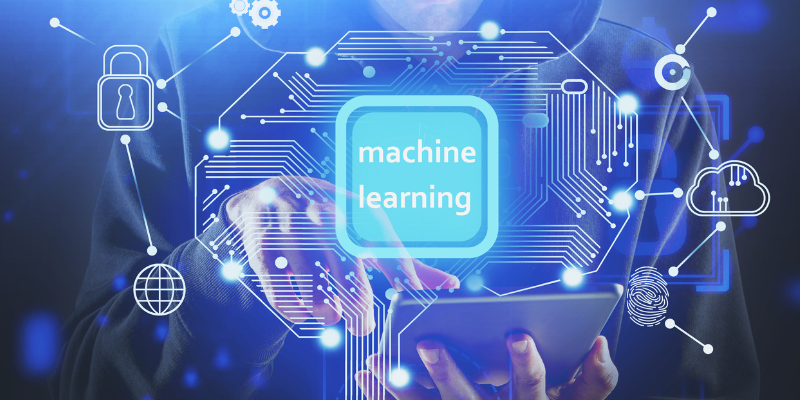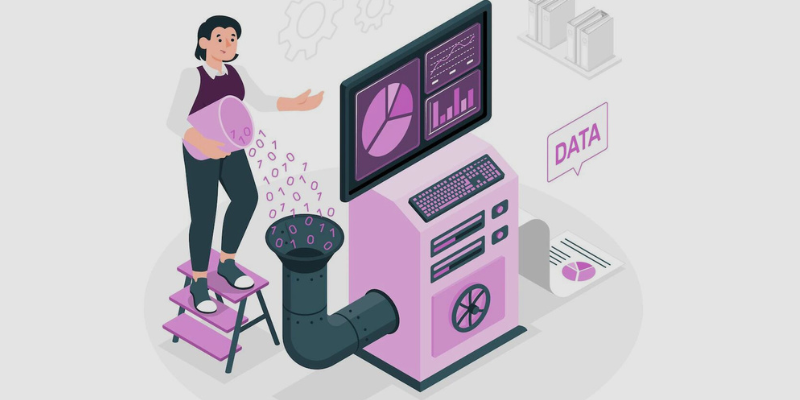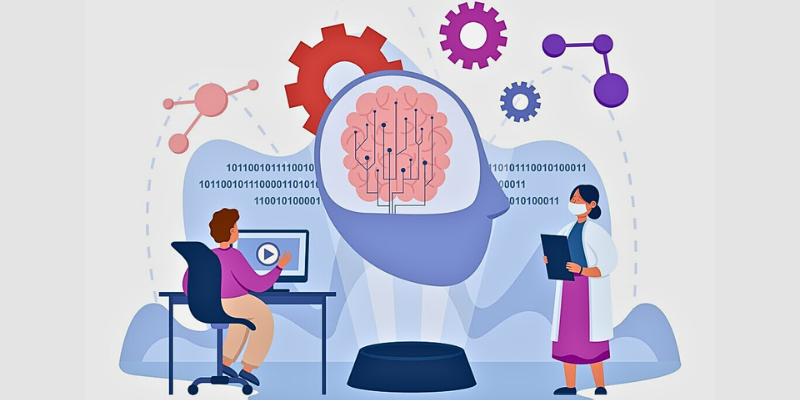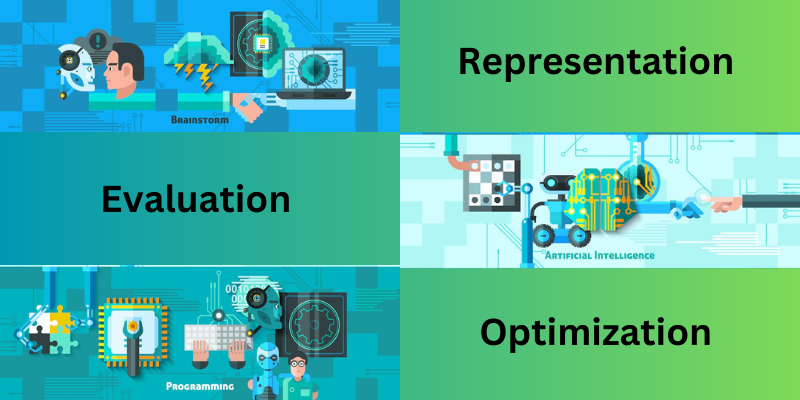Data mining and machine learning are related concepts in the field of data science that are used to extract valuable insights.
Nowadays, collecting data is easier and simpler than ever, but getting accurate information and insights can be tricky.
Large enterprises dealing with enormous amounts of data find difficulties in managing, organizing, and extracting meaningful information from it.
This is where companies can leverage two techniques – data mining and machine learning.
Both can discover patterns in the collected data and to enable businesses make informed, data-driven decisions based on this data.
Although both belong to data science and involve analytical methods, there are a few differences between the two terms.
In this article, I’ll discuss what data mining and machine learning are, their techniques and applications, and the differences between them.
Let’s begin!
What Is Data Mining?
Data mining is a process of collecting and analyzing a large amount of data from the web and finding patterns in it. By detecting relationships and patterns in data by this manual method, data scientists help a company solve its business issues, predict trends, and make informed decisions.

Data mining also assists companies in mitigating risks and discovering new business possibilities. This process begins with the aim of growing a business. Data is gathered from multiple sources and placed in data warehouses, which act as an analytical data repository.
With the help of data mining, companies can perform cleaning processes where they add missing information and remove duplicates. In order to detect patterns, data mining utilizes mathematical models and sophisticated techniques. It leverages technologies like machine learning, databases, and statistics.
Example: Banks or finance industries utilize data mining techniques to detect market risks. The process is frequently used in anti-fraud systems and credit ratings to evaluate transactions, purchasing trends, client financial data, card transactions, and more.
Marketing firms use data mining to discover customers’ habits or preferences to enhance their marketing initiatives on returns, manage regulatory duties, and examine the success of different sales channels.
What Is Machine Learning?
Machine Learning (ML) is a technology that makes computers think and act like humans. It enables computers to learn from previous data and make human-like decisions. This facilitates lesser human interference in the company’s operations, frees them from manual, repetitive tasks, and increases their focus on more important tasks.

The ML method is refined and automated depending on the learning experiences of machines during the process. The computers receive high-quality data and use various techniques to develop machine learning models in order to train machines based on the data.
The algorithm used in the ML model is dependent on the data type and automated action. Businesses use this method to automate several business processes and conduct speedy development.
Machine learning is used for various purposes across industries, such as social media analysis, image recognition, emotion recognition, and more. Simply put, ML helps develop and design complex algorithms or programs for large data sets to provide better results and efficiencies to the users and predict future trends. These programs can learn from specific data sets and experiences to improve the outcomes.
With frequent training data as input, the algorithms can be enhanced by machine learning models themselves.
ML has several algorithms, including linear regression, logistic regression, decision tree, SVM algorithm, Naive Bayes algorithm, KNN algorithm, K-means, Random forest algorithm, etc. ML algorithms are categorized into:
- Supervised learning: Supervised learning utilize the ML algorithm, which is already trained on a particular data set.
- Unsupervised learning: It utilizes the ML algorithm, which is already trained but on an unlabeled dataset.
- Reinforcement learning: It uses an algorithm based on trial and error to improve itself and learn from new things.
Data Mining vs. ML: Features
Features of Data Mining

- Actionable information: Data mining gathers meaningful information from large amounts of data.
- Automated discovery: The model for data extraction uses an algorithm to gather a huge amount of data and extract needed information.
- Grouping: Data mining can extract groups from the data. For example, a model identifies the employee group with a regular income of a fixed range.
- Data warehousing: All the data is kept in safe data warehouses so that if any problem arises, it can be addressed quickly in time of need. It’s also where data is cleaned and prepared properly.
Features of Machine Learning

- Automated data visualization: ML offers a variety of methods that can generate rich information, which is further used for structured and unstructured data. Businesses use accurate, relevant insights to enhance efficiency in their development and operations by facilitating user-friendly data visualization tools.
- Better analysis: ML helps data analysts efficiently and quickly process and analyze large amounts of data. With efficient algorithms and data-driven models, it creates better outcomes.
- Improved customer engagement: ML helps detect certain phrases, words, material styles, sentences, etc., that appeal to the target audience. You can also know their sentiments, preferences, and behavior, which will help you improve your offerings. This, in turn, helps improve customer engagement.
- Enhanced business intelligence: When ML features are merged with analytics, you can get excellent business intelligence to drive your strategic initiatives.
Data Mining vs. ML: Goals
Goals of Data Mining
Data Mining extracts the needed data from a sea of data. This is a simple method that employs different techniques in order to derive the desired outcome.

- Prediction: Data mining helps businesses predict future outcomes. For example, how much sales revenue a store can generate in the next three months.
- Identification: It identifies patterns in the collected and organized data. For example, newlywed couples are looking for new furniture.
- Classification: Data Mining separates data into classes. For example, customers can be categorized into various categories in terms of age groups, gender, shopping item, location, etc.
- Optimization: Data Mining optimizes the use of existing resources, such as space, money, materials, or time. For example, you can figure out how to make the best use of advertisements to enhance sales or profits.
Goals of Machine Learning
- To develop algorithms to achieve practical insights
- Learn from previous experiences and data and produce better outcomes
- Predict future outcomes and trends
- Analyze different aspects of learning behaviors
- Leverage computer system capabilities
- Provide accurate, relevant insights for business intelligence
- Automate repetitive, time-consuming tasks
Data Mining vs. ML: Techniques
Data Mining Techniques

The techniques often used in data mining are:
- Classification: This technique helps you classify or categorize data into different groups like humans, animals, countries, gender, etc.
- Clustering: Clustering analysis facilitates data comparisons. This allows the identification of the commonalities and variations among several data.
- Regression: Regression analysis is a technique applied to determine and assess relationships among different elements because of adding several new components.
- Outer: This technique refers to identifying data points in the gathered data set which may vary from a trend to behavior.
- Sequential pattern: This is a technique of data mining used to detect typical recurring trends by examining data. Therefore, it helps find the intriguing segments among the group of data sequences. The significance of this sequence is determined by the frequent occurrence, length, and other factors.
- Prediction: It utilizes numerous data mining techniques, such as clustering, trends, classification, etc., in order to forecast future events. Data mining experts predict future trends by studying the sequences of data, different instances, and past events.
- Association rules: Inside vast gathering of data in different kinds of databases, interactions among several data elements is taken place to illustrate the likelihood of each data. Hence, association rules offer if-then statements to carry out these interactions.
Machine Learning Techniques

Different ML techniques are:
- Regression: It falls under the supervised ML category that helps predict a particular value based on data. For example, it helps forecast an item’s price based on previous pricing data.
- Classification: It’s another class of supervised ML that helps explain or predict a class value. For example, you can predict whether a customer will buy a given product or not.
- Clustering: This technique aims to group similar characteristics to understand the quality of the solution.
- Ensemble methods: These refer to the combination of different models used altogether to get higher quality interpretations than a single model.
- Word embedding: It can easily capture the word in your document, allowing data experts to perform arithmetic operations with a variety of words.
- Dimensionality reduction: It is used to eliminate useless information from the dataset to present the needed information only.
- Reinforcement learning: It can record the actions cumulatively and use a trial-and-error action in the set environment.
- Transfer learning: This method is used to reuse the trained part of the neural net and adapt it to a similar task.
- Neural networks: It aims to gather nonlinear patterns inside the information by adding multiple layers to the model.
Also read: Learn Feature Engineering for Data Science and ML.
Data Mining vs. ML: Components
Components of Data Mining

The major components are as follows:
- Databases: In this component of data mining, data is stored. This is where integration techniques and data cleaning are implemented.
- Data warehouse server: This fetches the essential information based on the demands of users from a data warehouse.
- Knowledge base: The knowledge base or knowledge domain helps in discovering new patterns in extracted data.
- Data mining engine: This helps perform tasks like classification, cluster analysis, association, etc.
- Pattern evaluation module: This module communicates with the data mining structure in order to search for interesting patterns.
- User interface: You will get a graphical user interface in a data analysis tool where you can control the features, perform the process effectively, track changes and progress, and view the predicted items.
Components of Machine Learning

There are numerous ML algorithms, and each algorithm has three components:
- Representation: This component tells what a model looks like and how to represent basic knowledge. For example, there will be sets of rules, neural networks, model ensembles, support vector machines, graphical models, decision trees, etc.
- Evaluation: This component lets you evaluate different programs, such as prediction and recall, posterior probability, squared error, accuracy, margin, and more.
- Optimization: This component helps generate new, optimized programs and can be defined as a search process. Different types of optimization can be convex, constrained, and combinational optimization.
Data Mining vs. ML: Applications
Applications of Data Mining
- Healthcare: In order to improve healthcare systems, data mining technology provides various capabilities. It provides insights to help enhance patient care and minimize expenses.
- Banking: Data mining solutions are used in banking to enhance the ability to discover damage, challenges, trends, and more.
- Education: In the field of education, data mining helps in the expansion and development of educational institutions through information collected from different sources and performing competitor analysis.
- Security: To detect fraud, data mining helps convert data into valuable insights and discover new patterns.
- Marketing: Data mining allows organizations to separate their customer base into various segments. This way, they can customize their services according to the unique needs of customers falling into different segments.
Applications of Machine Learning

- Image recognition: Machine learning helps industries recognize images, faces, text, etc. For example, it can classify dogs and cats, track employee attendance with face recognition technology, etc.
- Speech recognition: Speech recognition-based intelligent systems like Siri, Alexa, etc., use ML algorithms for communication. They can easily convert speech into text with machine learning capability.
- Recommender systems: With the world becoming more digitalized, technology-based firms want to offer customized services to consumers. This is made possible with recommender systems that analyze users’ preferences and recommend services or content to them accordingly.
- Self-driving cars: Self-driving cars like Tesla cars are becoming popular among many customers since they provide advanced or automated driving. ML is used in self-driving cars for detecting traffic and providing better safety.
- Fraud detection: From buying items to making transactions, everything is now easy to use and more accessible. But with the increase in digitization, cases of fraudulent activities have also increased. To mitigate or limit this problem, fraud detection solutions are equipped with advanced ML algorithms that can detect fraud easily and even remotely.
Data Mining vs. ML: Similarities

- Both data mining and machine learning are used in the field of data science, for example, predictive modeling and sentiment analysis.
- Both include related mathematical concepts, algorithms, and statistics.
- Both can filter across a massive set of data, applications (using algorithmic methods), and tools.
- Both adopt algorithmic methods or comparable structures.
Data Mining vs. ML: Differences
| Data Mining | Machine Learning |
| Data mining is a process of extracting meaningful information from collected data. Data mining techniques are used for data collection, analysis, detecting patterns, and gaining valuable information. | Machine learning is a technology used for automating tasks, gaining insights, making better decisions, and predicting future events. Machine learning technology is used to forecast outcomes, such as time length approximation, price estimates, etc. |
| The primary purpose is to improve the usability of collected information. | It involves processes like data cleaning, feature engineering, predictions, and transformations. |
| Data mining is a kind of research activity that uses many technologies, including machine learning. | ML is a self-training and self-learning system to perform tasks accurately. |
| Human effort is required. | Human effort is not required once the design is done. |
| Data mining extracts data from sources and stores it in data warehouses. | Machine learning technology reads machines and keeps on learning and evolving. |
| It uncovers hidden insights and patterns. | It generates predictions to influence business decisions based on that. |
| It is based on historical data. | It is based on real-time and historical data. |
| It can be applied in a vast area or industries, such as manufacturing, cybersecurity, finance, banking, marketing, education, healthcare, search engines, and many more. | It uses ordinal, continuous, discrete, and nominal data types. |
| It can be applied in a limited area, such as healthcare, social science, business, etc. | It can be applied in a a vast area or industries, such as manufacturing, cybersecurity, finance, banking, marketing, education, healthcare, search engines, and many more. |
Conclusion
Data mining and machine learning are similar; both are used in data analysis to gain valuable information and insights.
However, there are many differences between them. Data mining is a process where needed information is extracted from a pool of data to detect patterns and gain efficiencies. On the other hand, ML makes predictions and automates processes using data and previous experiences.
So, if you want to apply them in real-time, understanding the approaches of each method is beneficial. And when used together, they can bring greater advantages for your company in growing your business, enhancing operations, and helping you make better decisions.
You may also explore some key data mining techniques.

